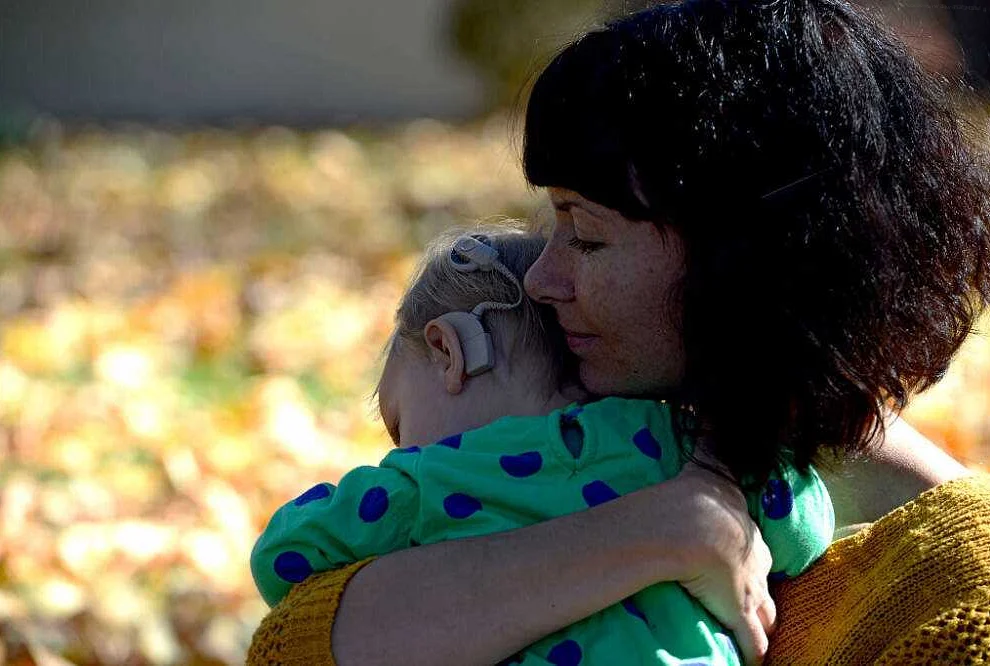3 Childhood Diagnoses that Don’t Actually Exist – But Doctors Make Them Anyway
Содержимое
Explore the world of questionable childhood diagnoses that doctors often make, even though they don’t actually exist. Learn about the controversial conditions that have been misdiagnosed and the potential consequences of these inaccurate assessments.
Childhood diagnoses are crucial in understanding and addressing a child’s health and development. However, it is essential to be aware that not all childhood diagnoses are based on solid scientific evidence. In some cases, doctors may assign labels to children without proper justification. This can lead to unnecessary medical interventions and potential harm.
While there are numerous well-established childhood diagnoses, such as autism spectrum disorder and attention deficit hyperactivity disorder, there are also three commonly made diagnoses that lack scientific validity:
1. Oppositional Defiant Disorder (ODD)
ODD is often diagnosed when a child exhibits defiant and disobedient behavior. However, experts argue that these behaviors are a normal part of child development and should not be pathologized. Labeling a child with ODD can stigmatize them and lead to unnecessary interventions, such as medication, when alternative approaches like parental guidance and therapy may be more appropriate.
2. Sluggish Cognitive Tempo (SCT)
SCT is a diagnosis often given to children who display symptoms such as daydreaming, lethargy, and slow processing speed. However, there is limited scientific evidence supporting its validity as a distinct disorder. Some experts argue that these symptoms may be better explained by other conditions such as attention deficit hyperactivity disorder or depression. Misdiagnosing children with SCT can lead to inappropriate treatments and a failure to address the underlying issues.
3. Sensory Processing Disorder (SPD)
SPD is characterized by difficulties in processing and responding to sensory information. While some children may experience sensory sensitivities, the diagnosis and treatment of SPD are highly controversial. Many experts argue that SPD lacks scientific validity and may be better understood as part of other conditions like autism spectrum disorder or attention deficit hyperactivity disorder. Misdiagnosing children with SPD can lead to unnecessary interventions and a failure to address the underlying causes of sensory sensitivities.
In conclusion, it is important for parents and healthcare professionals to critically evaluate childhood diagnoses and ensure that they are supported by rigorous scientific research. By avoiding unnecessary labels, we can prioritize evidence-based interventions that truly benefit children’s health and development.
Misdiagnosing Childhood Conditions: A Common Problem

Misdiagnosing childhood conditions is a widespread issue that affects many children and their families. While there are legitimate diagnoses that can greatly impact a child’s development and well-being, it is important to acknowledge that misdiagnoses also occur.
One common problem is the overdiagnosis of certain childhood conditions that may not actually exist. This can happen due to a variety of factors, including the pressure to label behavior as a medical condition, inadequate training or knowledge among healthcare professionals, and the desire for quick solutions.
For example, Attention Deficit Hyperactivity Disorder (ADHD) is a widely recognized and diagnosed condition in children. However, there is growing concern that some children may be misdiagnosed with ADHD when they actually have underlying issues that are not properly addressed.
Another condition that is often misdiagnosed is Oppositional Defiant Disorder (ODD). ODD is characterized by defiant and disobedient behavior, but it can be difficult to distinguish between typical childhood defiance and a genuine disorder. Misdiagnosing ODD can lead to inappropriate treatments and interventions.
Lastly, the diagnosis of childhood bipolar disorder has also come under scrutiny. Bipolar disorder is a serious mental illness that is typically diagnosed in adulthood. However, some children have been incorrectly diagnosed with bipolar disorder due to mood swings and erratic behavior. This misdiagnosis can lead to unnecessary medications and treatments.
It is crucial for healthcare professionals to exercise caution and thoroughness when diagnosing childhood conditions. A misdiagnosis can have long-lasting consequences for the child and their family. Additionally, it is important for parents to advocate for their children and seek second opinions if they have concerns about a diagnosis.
In conclusion, misdiagnosing childhood conditions is a common problem that can have serious consequences. It is essential for healthcare professionals to stay informed and make accurate diagnoses to ensure that children receive the appropriate care and support they need.
Overdiagnosis: Why It Happens

Overdiagnosis, the act of diagnosing a condition that doesn’t actually exist, is a growing concern in the medical field. It occurs when doctors mistakenly identify a condition based on symptoms that may be present but are not actually indicative of a true medical problem.
There are several reasons why overdiagnosis happens. One of the main factors is the pressure on doctors to provide a diagnosis and treatment plan for every patient. This pressure stems from a desire to provide the best care possible and avoid missing any potential medical issues. However, this can lead to hasty and inaccurate diagnoses.
Another contributing factor is the influence of pharmaceutical companies and the push to prescribe medication. The pharmaceutical industry invests heavily in marketing and promotes the use of their products for various conditions. This can lead doctors to overdiagnose certain conditions in order to justify prescribing medication.
Additionally, societal trends and increased awareness of certain conditions can also contribute to overdiagnosis. As public awareness of a particular condition grows, individuals may become more attuned to the symptoms associated with it. This can lead to an increase in self-reported symptoms and a greater likelihood of being diagnosed, even if the symptoms are not truly indicative of the condition.
Overdiagnosis can have serious consequences for patients. It can lead to unnecessary treatments, exposing individuals to potential side effects and complications. It can also cause unnecessary stress and anxiety for patients who are incorrectly diagnosed with a medical condition.
| Pressure on doctors to provide a diagnosis and treatment plan |
| Influence of pharmaceutical companies |
| Societal trends and increased awareness of certain conditions |
In order to address the issue of overdiagnosis, healthcare professionals and patients need to be aware of the potential for misdiagnosis and the consequences it can have. It is important for doctors to take the time to thoroughly evaluate patients and consider all possible factors before making a diagnosis. Patients should also be proactive in their own healthcare, seeking second opinions and asking questions to ensure they are receiving appropriate care.
The Controversial Diagnosis of “Oversensitivity”

One controversial diagnosis that has gained attention in recent years is the concept of “oversensitivity” in children. While not officially recognized by medical organizations, some doctors have started to diagnose children with oversensitivity based on their reactions to certain stimuli.
Oversensitivity refers to an exaggerated reaction to sensory input, such as sounds, touch, or visual stimuli. Children who are diagnosed with oversensitivity may exhibit extreme emotional or behavioral responses to everyday stimuli that most people would consider normal.
The diagnosis of oversensitivity is not without controversy. Critics argue that oversensitivity is not a valid medical diagnosis and instead represents a normal range of reactions to sensory input. They argue that labeling a child as oversensitive may lead to unnecessary medical treatments or interventions.
Proponents of the diagnosis argue that oversensitivity is a real condition that can significantly impact a child’s daily life. They believe that by identifying and addressing oversensitivity, children can receive appropriate support and accommodations to help manage their symptoms.
Currently, there is no consensus within the medical community on the validity of oversensitivity as a diagnosis. More research is needed to understand the true nature of oversensitivity and its impact on children’s development and well-being.
| Provides a framework for understanding and addressing extreme reactions to sensory input | May lead to unnecessary medical treatments or interventions |
| Allows for the development of tailored support and accommodations for affected children | Could potentially stigmatize and label children unnecessarily |
| Raises awareness about the impact of oversensitivity on children’s daily lives | Lacks scientific consensus and evidence supporting its validity |
In conclusion, the diagnosis of oversensitivity in children is a controversial topic within the medical community. Further research is needed to better understand this condition and its potential impact on children’s well-being. In the meantime, it is important for parents and healthcare professionals to approach the topic with caution and consider the potential benefits and drawbacks of a diagnosis of oversensitivity.
Recognizing the Risks of “Technology Addiction”
With the rapid advancement of technology, there has been a growing concern about the potential risks associated with excessive technology use. While technology can bring many benefits, such as improved communication and access to information, it can also lead to addictive behaviors and negative psychological effects.
Technology addiction, also known as internet addiction or digital addiction, is not yet recognized as an official psychiatric disorder. However, it is a term commonly used to describe problematic and compulsive technology use. It is important to recognize the risks of technology addiction and take steps to prevent and address it.
One of the main risks of technology addiction is the impact on mental health. Excessive technology use can contribute to feelings of anxiety, depression, and loneliness. Spending excessive time online can also lead to social isolation and a decline in face-to-face interactions, which are essential for healthy social development.
Another risk of technology addiction is the negative effect on physical health. Spending long hours sitting in front of a screen can lead to sedentary behavior, which is associated with a higher risk of obesity, heart disease, and other chronic conditions. Additionally, excessive use of technology can disrupt sleep patterns, leading to fatigue and decreased productivity.
Technology addiction can also have a detrimental effect on academic and occupational performance. Spending too much time on technology can result in decreased focus, lower productivity, and poor time management skills. This can lead to difficulties in school or at work and can negatively impact future opportunities and success.
To address the risks of technology addiction, it is important to establish healthy technology habits. This includes setting limits on screen time, engaging in other activities that promote physical and social well-being, and seeking professional help if needed. It is also crucial for parents and educators to teach children about the appropriate use of technology and provide guidance and support in developing healthy technology habits.
| Mental Health | Anxiety, depression, loneliness, social isolation |
| Physical Health | Sedentary behavior, obesity, heart disease, disrupted sleep patterns |
| Academic and Occupational Performance | Decreased focus, lower productivity, poor time management skills |